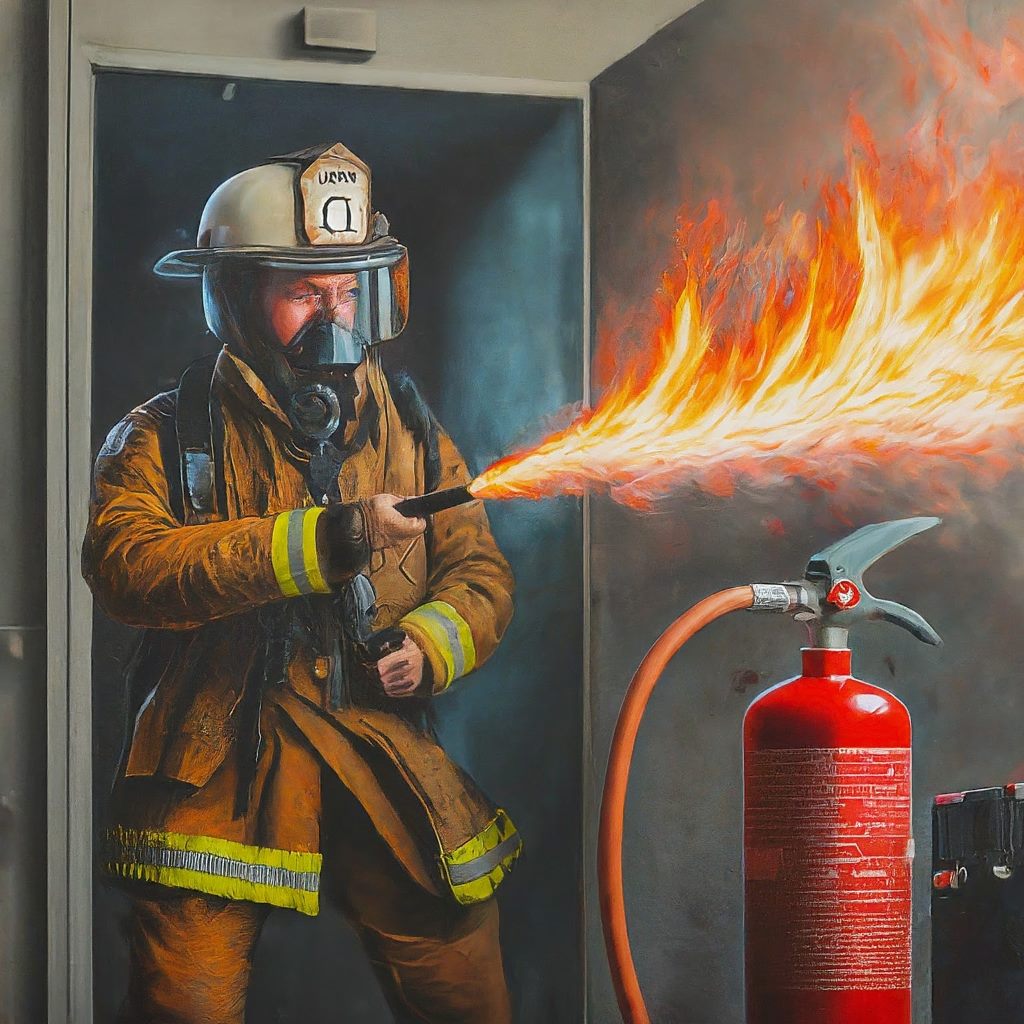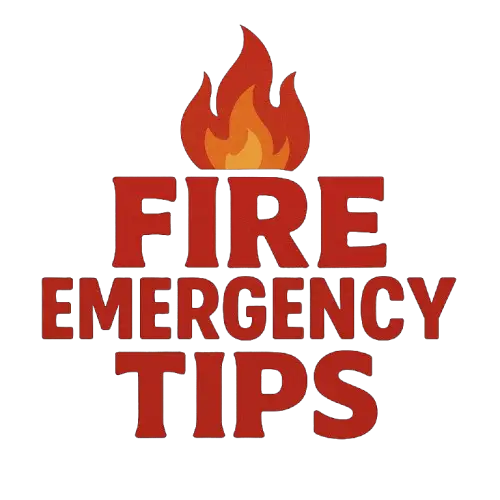
Fire extinguishers are essential safety devices that can be the first line of defense in controlling small fires. Understanding the various aspects of fire extinguishers, including their types, ratings, sizes, and classes, is crucial for effective fire safety. In this comprehensive guide, we will explore the intricacies of fire extinguishers to empower individuals with the knowledge needed to make informed decisions in selecting and using these critical safety tools.
Fire Extinguisher Classes: Know Your Fire Types
1. Class A: Ordinary Combustibles
- Materials Involved: Wood, paper, fabric, plastics, and other ordinary combustibles.
- Extinguishing Agent: Water, foam, or multipurpose dry chemical.
2. Class B: Flammable Liquids and Gases
- Materials Involved: Gasoline, oil, grease, solvents, and other flammable liquids and gases.
- Extinguishing Agent: Multipurpose dry chemical, carbon dioxide (CO2), or foam.
3. Class C: Electrical Equipment
- Materials Involved: Energized electrical equipment, wiring, outlets, and appliances.
- Extinguishing Agent: Carbon dioxide (CO2) or dry chemical.
4. Class D: Combustible Metals
- Materials Involved: Combustible metals such as magnesium, titanium, and sodium.
- Extinguishing Agent: Specialized dry powders or sand.
5. Class K: Kitchen Fires
- Materials Involved: Cooking oils, fats, and grease commonly found in commercial kitchens.
- Extinguishing Agent: Wet chemicals specifically designed for kitchen fires.
Fire Extinguisher Types: Matching the Tool to the Fire
1. Water Extinguishers (Class A)
- Suitable for: Fires involving ordinary combustibles (Class A).
- Considerations: Not suitable for flammable liquid or electrical fires.
2. Foam Extinguishers (Class A and B)
- Suitable for: Class A and B fires.
- Considerations: Effective for liquid-based fires but not suitable for electrical fires.
3. Carbon Dioxide (CO2) Extinguishers (Class B and C)
- Suitable for: Flammable liquid (Class B) and electrical (Class C) fires.
- Considerations: Limited cooling effect; may require caution in confined spaces.
4. Dry Chemical Extinguishers (Class A, B, and C)
- Suitable for: Class A, B, and C fires.
- Considerations: Versatile, but the residue can be damaging to sensitive equipment.
5. Wet Chemical Extinguishers (Class K)
- Suitable for: Kitchen fires (Class K).
- Considerations: Specifically designed for cooking oil and grease fires.
6. Clean Agent Extinguishers (Various Classes)
- Suitable for: Various classes, including B and C.
- Considerations: Leaves no residue, making them suitable for sensitive equipment.
Fire Extinguisher Ratings: Decoding the Numbers
Fire extinguisher ratings are expressed as a series of numbers and letters, indicating the device’s capabilities. The ratings are typically displayed on the extinguisher label using a classification such as 2-A:10-B:C. Here’s how to interpret these ratings:
1. Class A Rating
- Indicated by the number before the ‘A’: Represents the water equivalency rating. A higher number indicates more extinguishing power.
2. Class B Rating
- Indicated by the number before the ‘B’: Represents the square footage the extinguisher can effectively cover for flammable liquid fires.
3. Class C Rating
- Indicated by the letter ‘C’: Indicates that the extinguisher is safe to use on electrical fires.
UL Rating on Fire Extinguisher Label
An ABC Fire Extinguisher might have a UL Rating such as 4-A:80-B:C. To decipher this rating, let’s break down the numbers and letters:
1. A – Water Equivalency Rating:
- The number before the ‘A’ represents the water equivalency rating of the extinguisher. For instance, a 4A rating means the extinguisher is equivalent to 5 gallons of water, a crucial measure for combating Class A fires involving ordinary combustibles like wood and paper.
2. B – Relative Area Coverage:
- The number before the ‘B’ is a relative measure of the area the extinguisher can cover for Class B fires, which involve flammable liquids and gases. This number provides an indication of the extinguisher’s effectiveness in dealing with flammable liquid fires.
3. C & K – Compatibility with Fire Classes:
- The letters ‘C’ and ‘K’ indicate that the extinguisher can be used effectively against Class C and Class K fires. Class C fires involve electrical equipment, while Class K fires are specific to kitchen fires fueled by cooking oils and greases.
In practical terms, a higher rating implies greater potency against the specified fire classes. Let’s use an example to illustrate this:
- If Fire Extinguisher 1 has a 4-A:80-B:C rating.
- Fire Extinguisher 2 has a 1-A:10-B:C rating.
Fire Extinguisher 1 is:
- 4 times more potent against Class A fires.
- 8 times more potent against Class B fires.
Both extinguishers can combat Class C fires effectively.
Fire Extinguisher Sizes: Choosing the Right Size for Your Needs
Fire extinguishers come in various sizes, and selecting the appropriate size depends on factors such as the size of the potential fire and the environment where it will be used. Common sizes include:
1. 2.5-Pound to 5-Pound Extinguishers
- Suitable for: Small spaces, vehicles, or specific areas where space is limited.
2. 5-Pound to 10-Pound Extinguishers
- Suitable for: Medium-sized rooms, kitchens, or offices.
3. 10-Pound to 20-Pound Extinguishers
- Suitable for: Larger spaces such as warehouses or industrial settings.
4. 30-Pound to 50-Pound Extinguishers
- Suitable for: High-risk areas with a higher potential for larger fires.
Choosing the right size of a fire extinguisher is crucial for effective fire safety. The size determines the amount of extinguishing agent the device holds, and this, in turn, impacts its suitability for specific environments and fire risks. Here are some common fire extinguisher sizes along with their approximate weights:
- 2-A:10B:C – 4 lb.
- Suitable for: Small spaces, vehicles, or specific areas with limited combustible materials.
- Approximate Weight: 4 pounds.
- 3-A:40B:C – 5 lb.
- Suitable for: Small to medium-sized areas, offices, or spaces with moderate fire risks.
- Approximate Weight: 5 pounds.
- 4-A:60B:C – 10 lb.
- Suitable for: Medium-sized rooms, kitchens, or areas with a higher potential for larger fires.
- Approximate Weight: 10 pounds.
- 10-A:80B:C – 20 lb.
- Suitable for: Larger spaces such as warehouses or industrial settings with significant fire risks.
- Approximate Weight: 20 pounds.
Maintenance and Inspection: Ensuring Readiness
Regular maintenance and inspection are crucial to ensure fire extinguishers’ effectiveness. Consider the following:
1. Monthly Visual Inspection
- Check: The pressure gauge, tamper seal, and overall condition of the extinguisher.
2. Annual Professional Inspection
- Includes: Checking for proper pressure, examining the extinguisher for damage, and verifying the presence of a readable label.
3. Hydrostatic Testing
- Required: Every few years, depending on the extinguisher type.
Conclusion: Empowering Safety Through Knowledge
Understanding the classes, types, ratings, and sizes of fire extinguishers empowers individuals to make informed decisions regarding fire safety. Whether at home, in the workplace, or in public spaces, having the right fire extinguisher for the specific risks present is a crucial step toward creating a safer environment.
By recognizing the unique characteristics of each fire extinguisher class, selecting the appropriate type for potential hazards, deciphering ratings, and choosing the right size for the space, individuals can enhance their ability to respond effectively to small fires and contribute to overall safety.
Remember, the proper use of fire extinguishers should be part of a broader fire safety plan, which may include evacuation procedures, smoke detectors, and fire prevention measures. Regular training on fire extinguisher use is also essential to ensure that individuals can act confidently and swiftly in emergency situations.
